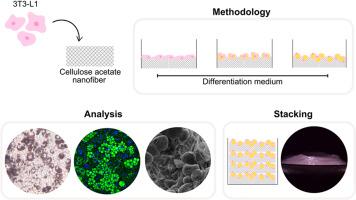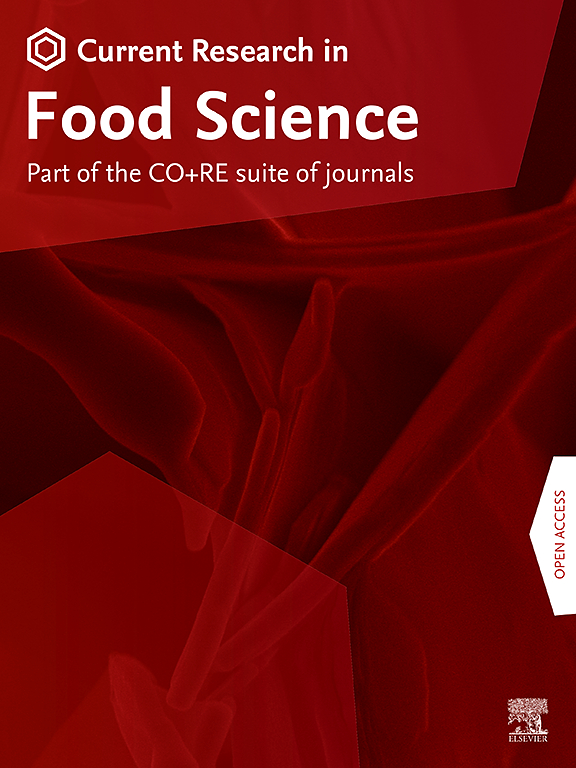醋酸纤维素纤维支架适用于培养脂肪的生产
IF 6.2
2区 农林科学
Q1 FOOD SCIENCE & TECHNOLOGY
引用次数: 0
摘要
脂肪是肉类的重要组成部分,它有助于肉类的感官特征。因此,生产培养脂肪对于复制传统肉类的质地、风味和多汁性至关重要。获得培养脂肪的挑战之一是脂肪细胞一旦在培养过程中达到分化,就容易漂浮起来。在这项研究中,我们测试了永生化前脂肪细胞在醋酸纤维素电纺丝制成的纤维支架上培养时能否存活、生长和分化。我们的结果表明,在培养期间,细胞在三维纤维结构中附着、增殖、定殖并分化为成熟的脂肪细胞。此外,当含有分化细胞的支架层层叠加时,它获得了与传统动物脂肪相似的特征。因此,这项研究表明,使用醋酸纤维素制作的纤维支架是一种很有前景的生产培养脂肪的基质。本文章由计算机程序翻译,如有差异,请以英文原文为准。

Acetate cellulose fibrous scaffold is suitable for cultivated fat production
Fat is an essential component of meat which contributes to its sensory characteristics. Therefore, producing cultivated fat is essential to replicate the texture, flavor, and juiciness of conventional meat. One of the challenges in obtaining cultivated fat is that once adipocytes reach differentiation in culture, they tend to float. In this study, we tested whether immortalized pre-adipocytes could be viable, grow, and differentiate when cultivated onto a fibrous scaffold produced by the electrospun of cellulose acetate. Our results demonstrated that the cells attach, proliferate, colonize, and differentiate into mature adipocytes in the three-dimensional fibrous structure during the culture period. Moreover, when layers of the scaffold containing differentiated cells were stacked, it acquired a characteristic similar to conventional animal fat. Therefore, this research suggests that fibrous scaffolds produced using cellulose acetate are a promising substrate for producing cultivated fat.
求助全文
通过发布文献求助,成功后即可免费获取论文全文。
去求助
来源期刊

Current Research in Food Science
Agricultural and Biological Sciences-Food Science
CiteScore
7.40
自引率
3.20%
发文量
232
审稿时长
84 days
期刊介绍:
Current Research in Food Science is an international peer-reviewed journal dedicated to advancing the breadth of knowledge in the field of food science. It serves as a platform for publishing original research articles and short communications that encompass a wide array of topics, including food chemistry, physics, microbiology, nutrition, nutraceuticals, process and package engineering, materials science, food sustainability, and food security. By covering these diverse areas, the journal aims to provide a comprehensive source of the latest scientific findings and technological advancements that are shaping the future of the food industry. The journal's scope is designed to address the multidisciplinary nature of food science, reflecting its commitment to promoting innovation and ensuring the safety and quality of the food supply.
 求助内容:
求助内容: 应助结果提醒方式:
应助结果提醒方式:


